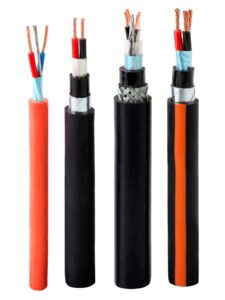Common Cable Design Missteps
Through many years of working with customers to design and supply custom cable, Galaxy has seen many misconceptions and errors and helped customers avoid them. These are the most common missteps to avoid.
1. Incorrect Wire AWG
Choosing the wrong AWG sized conductor can lead to inefficiencies or safety hazards. Under-sizing can cause overheating, while over-sizing increases material costs and can make the wire unnecessarily difficult to handle.
Voltage and Ampacity not calculated properly can occur if the ambient temperature or derating factors are not properly accounted for.
2. Wrong Insulation/Jacket Material Selection
Picking the incorrect insulation/jacket material can lead to cable failure under environmental conditions such as temperature, humidity, water, or chemical exposure.
Insulation materials should be chosen based on the intended use of the end product or equipment. Among the many factors that must be considered are flexibility, thermal resistance, UV resistance, and abrasion protection.
3. Insufficient Shielding
Improperly chosen / insufficient shielding can result in signal interference, crosstalk, or electromagnetic interference (EMI), especially in high-frequency or sensitive electronic applications.
4. Regulatory and Certification/Rating Issues
Not understanding regulations or laws can result in non-compliance and could mean that the cable cannot be used for its intended application. The need for agency ratings like UL, CSA, RoHS, Low Smoke Zero Halogen and Plenum ratings must be clearly understood.

